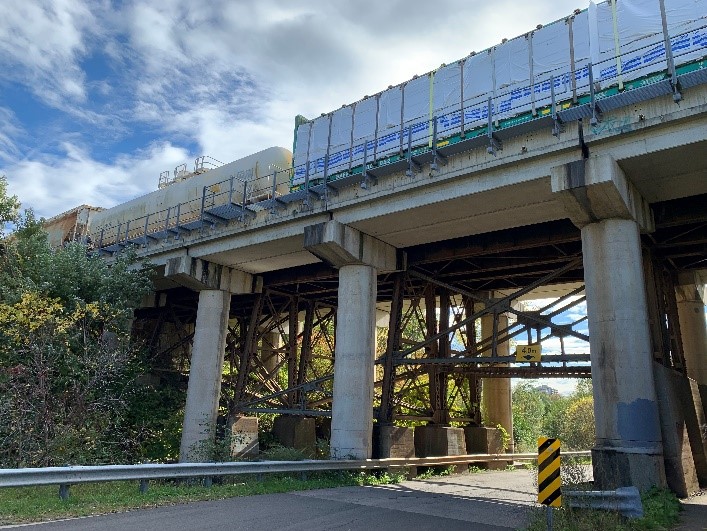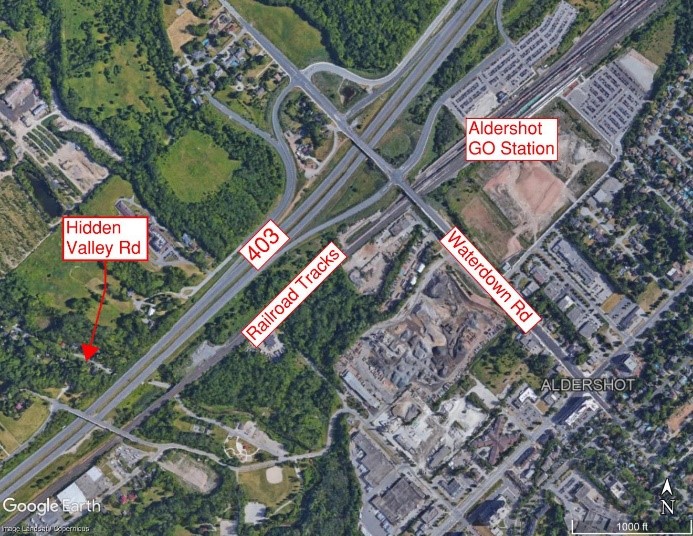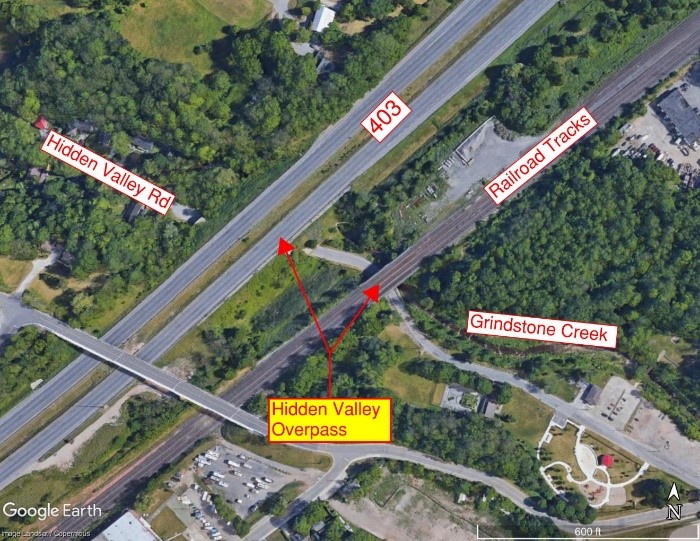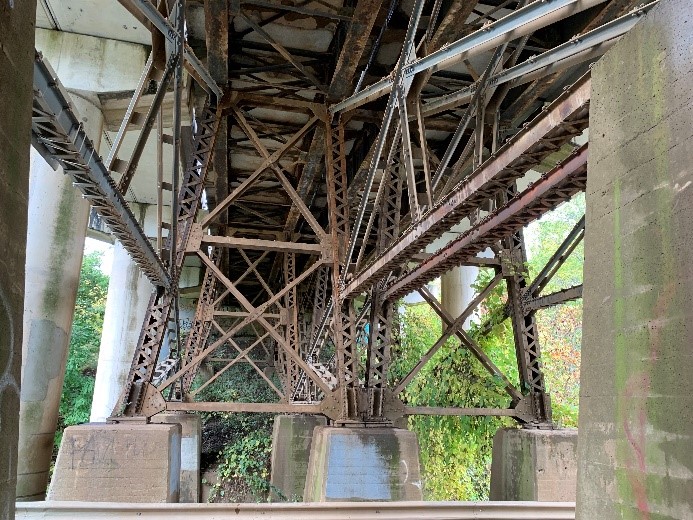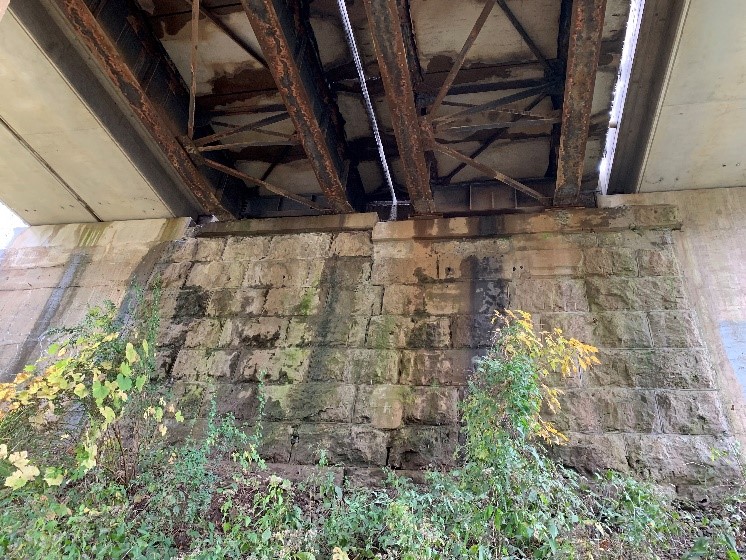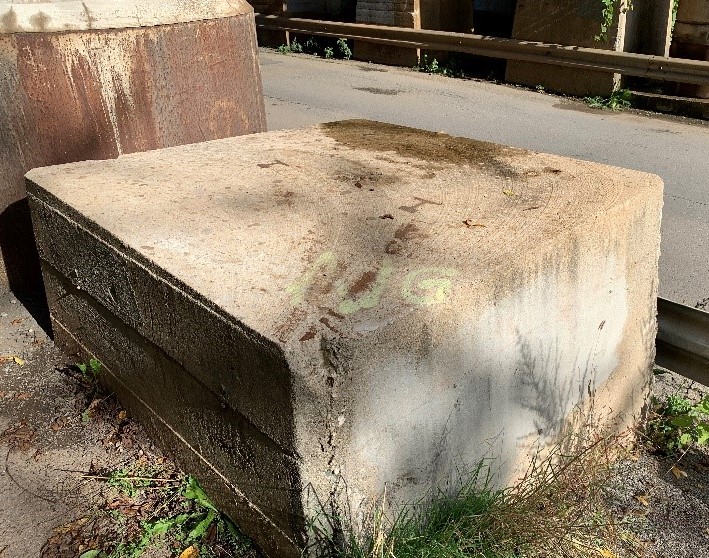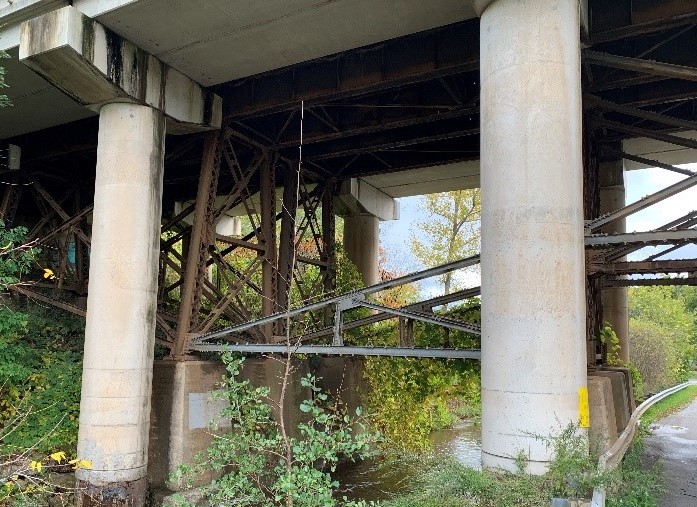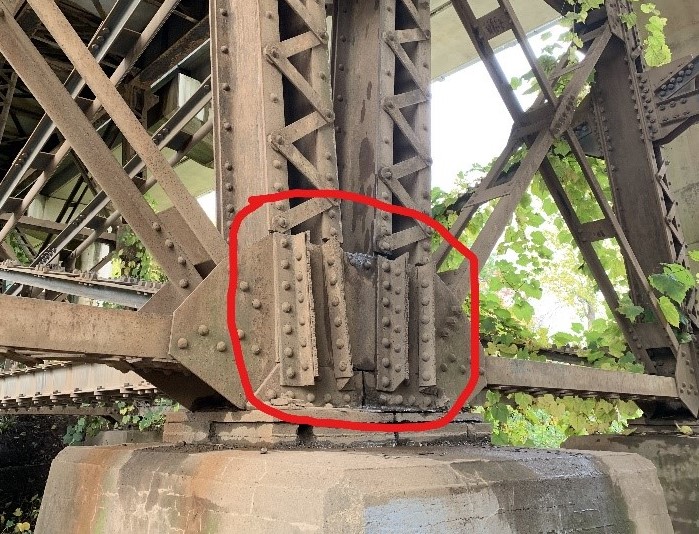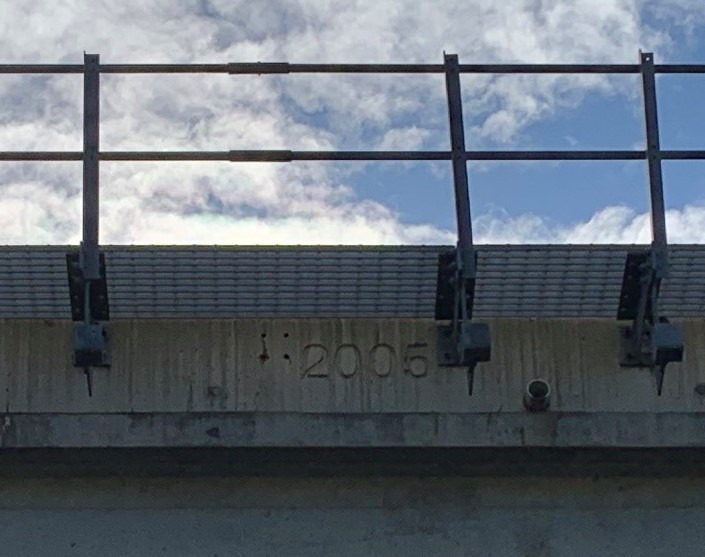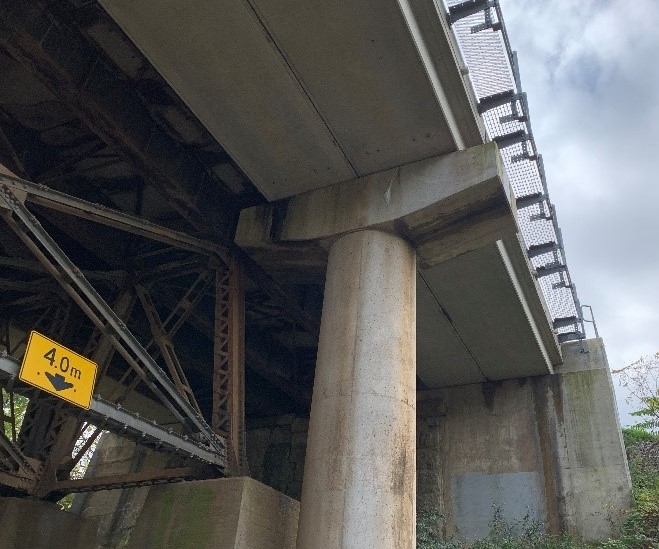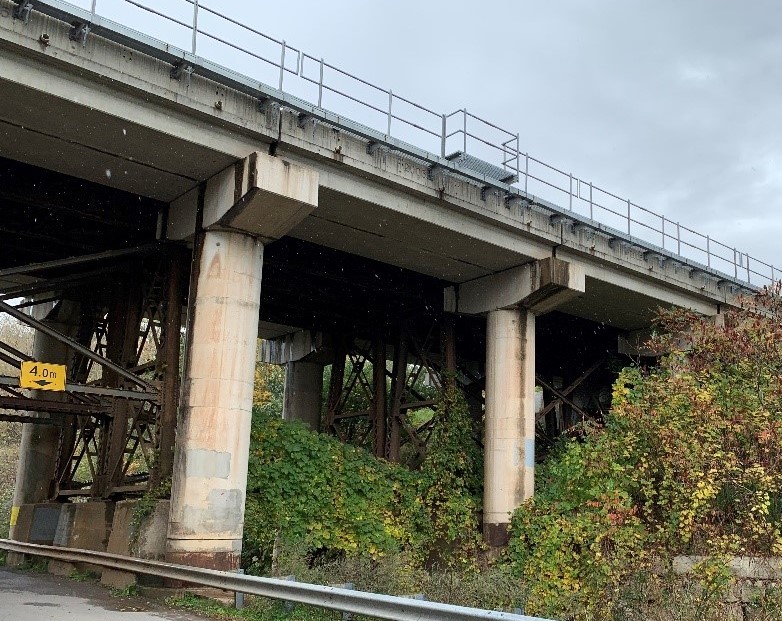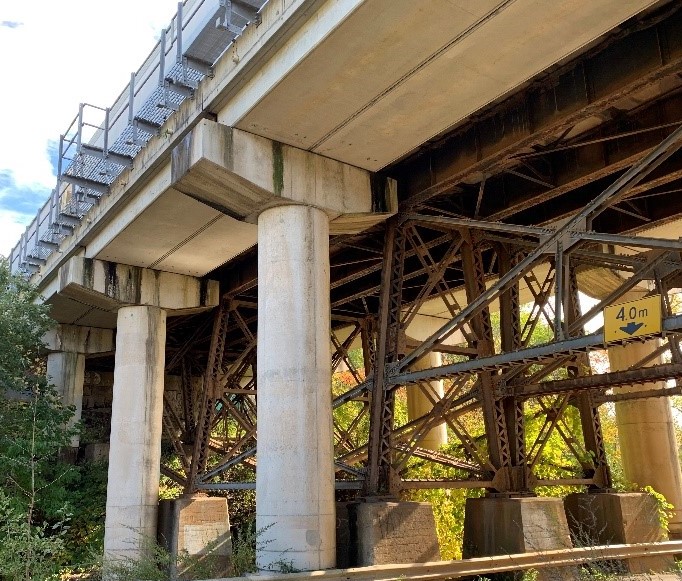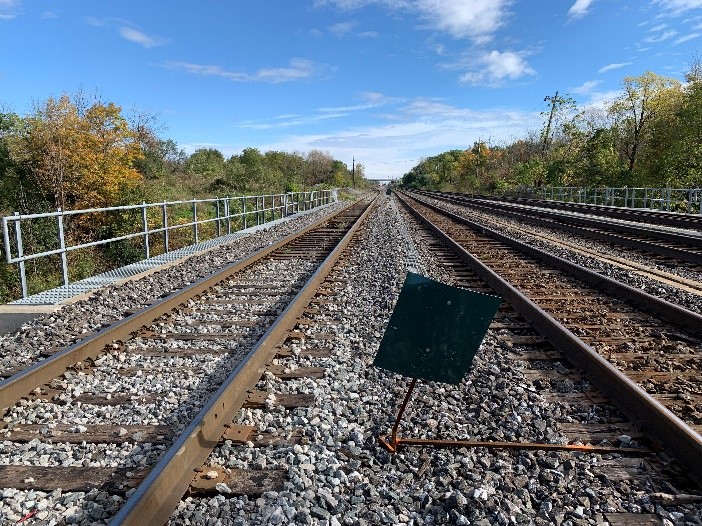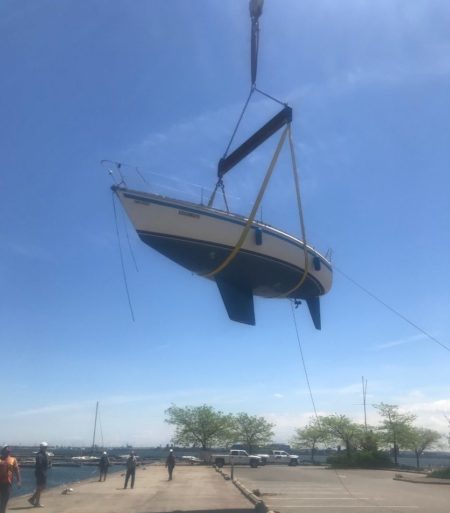Two generations of bridges side-by-side, built 100 years apart, carrying the country’s heaviest traffic — the Hidden Valley Overpass railroad bridges are a very well-kept secret. You can live your entire life in the Burlington area and not know about Hidden Valley Road (appropriately named) just west of the Waterdown 403 exit. It parallels the Grindstone Creek under the railroad tracks and Highway 403 (see Figure 1).
There are four bridges, each about 50 metres long, built to carry four sets of tracks over the Grindstone Creek and Hidden Valley Road. The original bridges built in the 1850s and 1870s were part of the Grand Trunk Railway, headquartered in Hamilton and connecting what was then most of Canada (east coast and the St. Lawrence) to the wild west (western Ontario and the rest of the Great Lakes). They were most likely built of lumber, and as freight trains got longer and heavier over the years, they were replaced in the early 1900s (no records of exactly when) with the steel truss bridges we see today. These two bridges can only be dated based on their materials and construction methods (see Figure 2).
The concrete foundations of the old bridges are unreinforced (see Figure 3). Concrete today has reinforcing steel within it, which significantly increases its capacity.
They were also built before Hidden Valley Road was put in place, evidenced by the retrofitting of the steel structures done to make room for cars to drive under. The truss over the roadway is raised and made of newer steel sections bolted together. Threaded bolts didn’t exist when the original bridges were built. Neither did steel channels. And the spans over the creek have an odd triangular truss, supporting the resulting lopsided framing across the bridge. You can even see where the old trusses were torched out to make room for the new ones.
As these tracks got busier, the railroad was expanded to four tracks by Canadian National in 2005. By then, bridge construction was a different ballgame. The two old steel truss bridges were flanked by two new concrete bridges. Concrete is the most efficient material in compression, which is why the piers that hold up the bridges are made of concrete — it’s best for carrying trains. The deck spans (the structure that supports the tracks between the piers) are also made of concrete but were precast off-site then set in place with cranes. This is much faster and much less disruptive for train service (see Figures 5 and 6).
In contrast, steel is much less efficient in compression, which is why the trusses supporting the old bridges have a complex web of beams, columns, and cross braces compared to the adjacent simple and slender concrete columns of the new bridges (see Figure 7). Steel is very efficient, however, in tension, whereas concrete is not.
Railroad companies across North America have developed some of the most efficient methods for bridge construction and bridge replacement over the past fifty years because they often require shutting down a neighboring track, which has high-cost implications for railroad service; therefore, the work needs to be done as fast as possible. It’s safe to assume that the bridges built in 2005 took a fraction of the time it took to build the older bridges.
Such a wonderful piece of infrastructure of old and new bridge construction together in one location totally hidden from view and incredibly underrated. The perfect mix of history, evolution, expansion, and engineering make this group of bridges a must-see for any engineer, rail or bridge construction enthusiast. Rail traffic above remains completely oblivious to the complexity of the bridges’ substructures. And that’s the goal of good engineering — it does its job so well that it goes unnoticed. These bridges over Hidden Valley Road are worth the detour.
Trivia
Do you know what GO Transit stands for?
Answer: Government of Ontario Transit.
Have you seen an interesting building or piece of infrastructure in or around Burlington that you’d like Eric Chiasson, your personal engineer, to write about?
Send us your suggestions, comments, or questions to articles@local-news.ca and we’ll see what Eric can find out!
Sources:
Marsh, J. H., Marshall, T., and Baker, N. 2021. Railway History in Canada. The Canadian Encyclopedia. Url: https://www.thecanadianencyclopedia.ca/en/article/railway-history (accessed Oct. 24, 2021).
Toronto Railway Historical Association. Grand Trunk Railway. Url: https://www.trha.ca/trha/history/railways/grand-trunk-railway/ (accessed Oct. 24, 2021).
Tourism Burlington. 2019. Freeman Station — History and Today. Url: www.tourismburlington.com/freeman-station/ (accessed Oct. 24, 2021).

